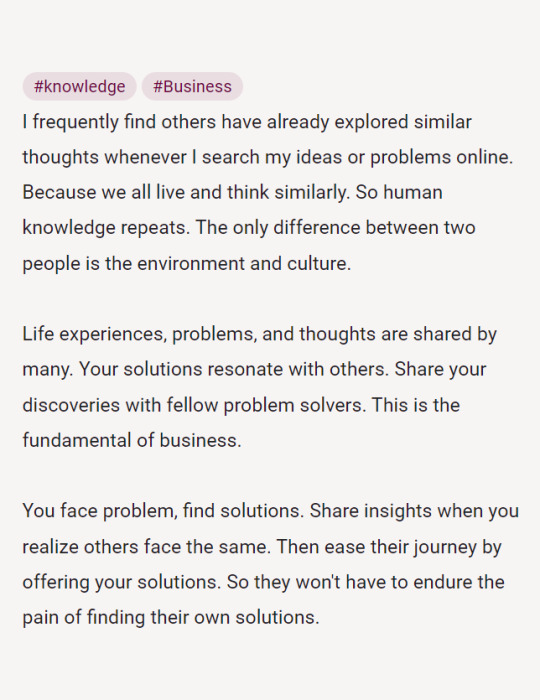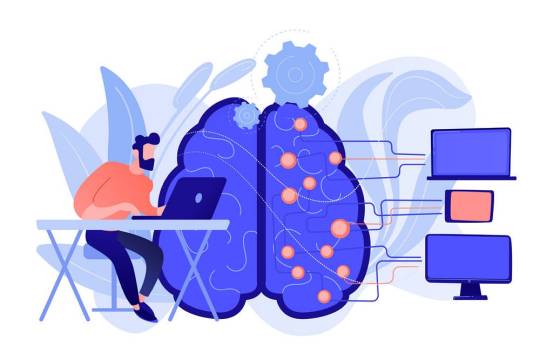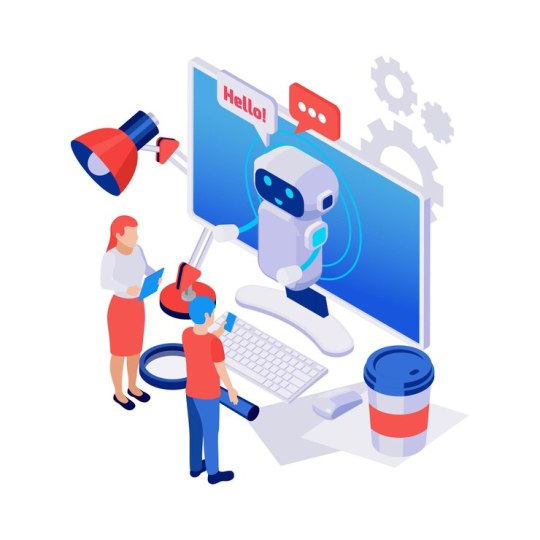#deep learning market
Explore tagged Tumblr posts
Text
Deep Learning Market Poised for Explosive Growth: Forecast to Surge from $12.6 Billion in 2022 to $130.7 Billion by 2032
The deep learning market is expected to be worth US$ 12,569.0 million globally in 2022 and is projected to increase at a CAGR of 26.4% to US$ 130,667 Million globally from 2022 to 2032. The fast use of cloud-based technologies across several businesses is blamed for the expansion of the deep learning market.
Deep learning neural networks are being used by businesses to mine massive volumes of data for insightful information that can be used to develop new products, enhance consumer experiences, and expand revenue potential for the deep learning market. One of the most cutting-edge technologies in business computing is deep learning, which is growing on a global scale.
During the projected period, the worldwide deep-learning market will expand due to the increasing demand for improved human and system interaction. Deep learning algorithms will help humans become more capable as they provide expert advice. Additionally, deep learning technology is increasingly being used in a variety of industrial sectors, including healthcare, finance, retail, and others. Strong R&D for the development of new products is another element propelling this market.
Request for a Sample of this Research Report https://www.futuremarketinsights.com/reports/sample/rep-gb-5013
The rise of data mining applications in the deep learning market is being driven by the rising need for deep learning in fraud detection, database systems, and cyber security. The patient information, diagnosis, and other data sets produced by the healthcare industries are massive. Data mining is therefore expected to experience the fastest growth rate in the healthcare industry shortly.
Deep Learning Market: Market Dynamics: The rising necessity for hardware platforms with high computing power to execute deep learning algorithms is a driving factor of the Deep Learning market Increasing complexity in hardware due to the complex algorithm in deep learning technology can hamper the growth of the Deep Learning market. Growing usage of deep learning in data analytics and database systems growth opportunities for the Deep Learning Market.
Global Deep Learning Market: Competition Landscape: A few prominent players in the Deep Learning market include Google Inc., Microsoft Corporation, Qualcomm Technologies, Inc., IBM Corporation, Intel Corporation, General Vision Inc., and NVIDIA Corporation, etc.
Key Segments Profiled in the Deep Learning Industry Survey
Deep Learning Market by Product:
Hardware
Software
Services
Deep Learning Market by Application:
Image Recognition
Signal Recognition
Translation
Data Mining
Deep Learning Market by End User:
Automotive
Media & Entertainment
Aerospace & Defence
BFSI
Retail
Healthcare
Deep Learning Market By Region:
North America Deep Learning Market
Europe Deep Learning Market
Latin America Deep Learning Market
Asia Pacific Deep Learning Market
Middle East & Africa Deep Learning Market
0 notes
Text
#Deep Learning Market#Deep Learning Market size#Deep Learning Market share#Deep Learning Market trends#Deep Learning Market analysis#Deep Learning Market forecast#Deep Learning Market outlook
0 notes
Text
Key Industries & Applications in the Global Deep Learning Market
Over the years, deep learning has emerged as a transformative technology, revolutionizing the way various industries operate. Accordingly, the domain has become instrumental in the field of data analysis, predictive modeling, and process optimization. As per Inkwood Research, the global deep learning market is anticipated to grow with a CAGR of 39.67% during the forecast period 2023-2032.

In this blog, we will explore how major industries are leveraging the potential of deep learning in order to drive innovation and efficiency in their operations. We will also highlight real-world examples of successful deep learning applications in each of these industries.
1. Healthcare
Healthcare organizations of all specialties and types are becoming increasingly inclined toward how artificial intelligence (AI) can facilitate better patient care, while improving efficiencies and reducing costs. In this regard, the healthcare industry has been at the forefront of adopting deep learning for a wide range of applications, such as –
Medical Imaging: Deep learning algorithms have significantly improved the accuracy of medical image analysis. For instance, Aidoc (Israel), a leading provider of AI-powered radiology solutions, aims to improve the efficacy as well as accuracy of radiology diagnoses. The company’s platform utilizes deep learning algorithms in order to analyze medical images and aid radiologists in prioritizing and detecting critical findings.
Drug Discovery: Pharmaceutical companies are using deep learning to expedite drug discovery processes. Insilico Medicine (United States), for example, employs deep learning models to predict potential drug candidates, reducing the time and cost associated with developing new medications. The company’s early bet on deep learning is yielding significant results – a drug candidate discovered via its AI platform is now entering Phase II clinical trials for the treatment of idiopathic pulmonary fibrosis.
Disease Diagnosis: Deep learning is aiding in disease diagnosis through predictive modeling. PathAI (United States), for instance, utilizes deep learning-based AI solutions to assist pathologists in the detection, diagnosis, and prognosis of several cancer subtypes, thus improving the accuracy of diagnoses and patient outcomes.
2. Finance & Banking Services
The success of deep learning as a data processing technique has piqued the interest of the financial research community. Moreover, with the proliferation of Fintech over recent years, the use of deep learning in the finance & banking services industry has become highly prevalent across the following applications –
Fraud Detection: Banks and financial institutions deploy deep learning models to detect fraudulent activities in real time. Companies like Feedzai (Portugal) use deep learning algorithms to analyze transaction data and identify unusual patterns indicative of fraud. In July 2023, the company announced the launch of Railgun, a next-generation fraud detection engine, featuring advanced AI to secure millions from the surge in financial crime.
Algorithmic Trading: Hedge funds and trading firms leverage deep learning for algorithmic trading. Investors are utilizing deep learning models to evaluate and anticipate stock and foreign exchange markets, given the advantage of artificial intelligence.
Credit Scoring: Deep learning is transforming the credit scoring landscape. LenddoEFL (Singapore), for instance, creates, collects, and analyzes information from consent-based alternative data sources for an accurate understanding of creditworthiness. The company’s unique credit decisioning tools draw from large, diverse, and unstructured data sources through deep learning, artificial intelligence, and advanced modeling techniques.
3. Manufacturing
Here’s how the manufacturing industry benefits from deep learning in optimizing production processes and quality control –
Predictive Maintenance: Manufacturers use deep learning to predict equipment failures and schedule maintenance proactively. General Electric’s (United States) Predix platform employs deep learning to support innovative IoT solutions to help reduce downtime and maintenance costs.
Quality Control: Deep learning-based image recognition systems inspect products for defects on production lines. Real-time deep learning approaches are essential for automated industrial processes in product manufacturing, where vision-based systems effectively control the fabrication quality on the basis of specific structural designs.
Supply Chain Optimization: According to industry sources, deep learning models have the potential to generate between $1-2 trillion annually in supply chain management. In this regard, deep learning is used in the manufacturing sector to optimize supply chain operations by predicting demand patterns, enhancing inventory levels, and improving logistics planning.
Deep learning’s ability to process vast amounts of data and recognize complex patterns is transforming the way industries operate, making processes more efficient and enhancing customer experiences. As businesses strive to remain competitive in an increasingly data-driven world, leveraging deep learning and staying updated on its latest developments will be crucial for the overall growth of the global deep learning market.
FAQs:
What are the key components of a deep learning system?
A deep learning system typically comprises input data, a deep neural network architecture, loss functions, optimization algorithms, and labeled training data.
How does deep learning differ from traditional machine learning?
Deep learning, unlike traditional machine learning, eliminates the need for manual feature engineering by allowing models to learn and extract features automatically from data.
0 notes
Text







caps from comic Im doing
#not art yet. sorta#yeah that's one piece#outing myself this year as a sanji enjoyer#idk what compelled me to come back here (that's a lie I know 100% and it's haterism) but I did finally sit down and put down#this idea I've sat on for a Long time. bc I think I just. finally feel ready for it#or rather. both it and myself have been worn down and moulded enough by just. time passing. to be able to sit with each other in peace#but yeah I'm now neck deep in this (almost halfway thru inking!!) and Im learning a Lot#whatever u say abt one piece oda is a Phenomenal comic artist. one piece art-wise is dense on a level that makes me feel insane#like you barely see more than one type of screentone used and it's mostly to separate planes. its Just Ink. its fucked up#and drawing this comic is forcing me to show up on my a-game on a craft level as well. I love so much a Large part of it so far#comic is good guys. did u guys know that has anyone said this before#but yeah this one will! probably get posted to my main blog when the posting version is done. which is why I said in the prev ask#that the spheres might intersect soon lol#Im aware this is a stupid way to go about it if u look at it from a marketing/advertising angle. but thats not what Im here for#Im showing u cool bugs I made basically. and when the exhibit happens its gonna have mostly nothing to do with this#but yeah. if u see a comic with these caps in it in the future u will Know#otherwise we keep up kayfabe yeah? for fun. for comfort
46 notes
·
View notes
Text
gonna learn some canva to better my chances of getting a new marketing job. to make it fun and Not Scary for myself I'm thinking of making little graphics themed around ponies I like, so i can get a little practice and post them here without feeling like they need to be the Best Thing Ever
#the deep fear of being visibly A Beginner as an adult online#I'm in the process of being laid of bc of the company losing money so#I'm applying to jobs but a LOT of marketing jobs#want people who do text of all genres and social media work and brand strategy and social media videos (all of which I can do)#but ALSO be able to create graphics#so I'm gonna learn canva for easy graphics dont worry I know thats not as good as actual graphic design#but you know thats a whole ass separate education#Im doing what I can ok
12 notes
·
View notes
Text
I know it's been a few years since I've run my own dog training business instead of working for someone else for exploitation wages and that previously I was working in the rural south where prices are a bit different in general, but out of curiosity I decided to look at some dog training services in my area in upstate NY today and got hit with sticker shock ngl.
Most places don't post their prices so I could only compare a few (which... I sort of get since they want to avoid competition doing what I'm doing right now lol but as someone who has run a dog training business and had business marketing included in my education it's something I see as an... *interesting* choice, because most clients want to know price up front without having to contact you and wait for a response because they probably already have a budget in mind and just want to be able to quickly see if you fit into it or not, which means not having prices posted will make some potential clients immediately look elsewhere and if you don't even have some sort of price range for services posted somewhere then most of your calls and emails will just be people asking for pricing and a majority of those calls and emails will not lead to services purchased so it ends up wasting a lot of unpaid time on office work BUT THATS AN UNRELATED TOPIC, I DIGRESS) but WOWZA the ones that did have prices posted really made me realize I do NOT live in a low cost of living place anymore.
One of the popular places here that I looked at charges $150+ for ONE training session with one of their APPRENTICE trainers. It's double that price to train with one of their more experienced dog trainers for just one session.
I looked back at some of the trainers I was competing with back in FL and NC to compare as well as the dog training school I went to just to check and see if prices were getting that high in other rural areas, and nope. Most places $300 would still get you at least three - maybe up to six - private lessons spread out over three (or six, or whatever) weeks, which is the pricing range I'm used to seeing dog trainers in the rural south suffer with because of places like Petsmart setting the pricing bar so low.
I'm pretty sure I have more formal dog training education and certification than most of the employees at this place too since even their main "behaviorist" (not a protected title in the USA so anyone can call themselves that) has no certifications listed at all that I can find, so... I guess now that I live here if I ever start training again I'm going to have to rethink my pricing lol even if I don't charge those kinds of prices I clearly still need to bump them up in this area from what I used to charge in order to be competitive with these other training businesses.
#pricing too low compared to competition is a business killer btw#another think i learned in my marketing classes#most people buying dog training are wealthier#not necessarily rich but... not poor#and although id love to offer sliding scale for low income clients if i ever do training on my own again#your normal prices being too low WILL turn away those clients who are higher income#cuz EVEN IF IT'S NOT ACTUALLY TRUE higher class members of our society have a subconscious idea that price often = quality for services#I KNOW I KNOW I did not believe this either straight out of school and underpriced my services still anyway despite being taught that#because it did not make sense to my poor person brain to assume that wealthier people think like that#but i learned very quickly after having a couple of wealthier people literally LAUGH at my pricing#or make weird faces and say “that's it?'#the first dude who laughed at my pricing actually gave me a tip that doubled my price for his services every time i worked for him#and another regular of mine often left me envelopes of cash because she said she felt bad that i was charging so little#and that it actually made her second guess hiring me at first#SO JUST TAKE THE ADVICE AND CHARGE WHAT IS COMPETITIVE IN YOUR AREA AT LEAST INSTEAD OF TRYING TO UNDERCUT COMPETITION#or compete with the big chains DEAR GOD DO NOT TRY TO COMPETE WITH THE BIG TRAINING CHAINS PRICE WISE FOR YOUR OWN MENTAL HEALTH#you will burn yourself out and make yourself hate dog training if you try to compete at their exploitation prices#at the least price around what other people who are NOT working for chains in the area do#and ideally price what you think would make you feel like your time and labor is being adequately compensated#which means enough to afford to live and afford to pay for things like health insurance as an independent contractor#and have enough left over for some QOL stuff and to put some into savings for emergencies or slow periods for your work#a lot of people working with animals ridiculously undercharge and then end up screwing themselves over mentallt and physically#anyway this post and the tags are long enough and i could rant about pricing and fair wages forever so im done now lol#just reeling a little at the idea of charging $300 for a single dog training lesson and that PEOPLE HERE ARE PAYING THAT#THAT PLACE IS POPULAR AND SUCCESSFUL#they do not pay their trainers that much though lmfao they make only like $6 over minimum wage OF COURSE#which I know because I got into this pricing deep dive after seeing multiple of their job listings because they're hiring right now#i hate business owners that do pricing vs employee pay so differently like that they are honest to god EVIL that is exploitation
6 notes
·
View notes
Text

#business#branding#marketing#psychology#thoughts#knowledge#learning#reality#thinking smart#deep thoughts
2 notes
·
View notes
Text
10 Ways To Use Machine Learning For Marketing In 2024

Introduction:
As the digital marketing arena continues to evolve, machine learning has emerged as a important force reshaping the industry’s scene. To dvelve deeper into this transformative journey, we invite you to explore this insightful article on Analytics Vidhya that provides a comprehensive overview of machine learning’s impact on marketing in 2023 as well as 2024.
Now, let’s journey into the world of machine learning and discover how it empowers marketers to achieve unprecedented results.
1. Personalized Customer Experiences:
Machine learning, the driving force behind personalized customer experiences, analyzes extensive datasets to deliver tailored content, product recommendations, and also experiences. Personalization reigns supreme in effective marketing in 2023.
2. Predictive Analytics:
Machine learning models provide invaluable insights by forecasting trends, customer behavior, and market fluctuations. This empowers businesses to make data-driven decisions, enabling them to stay one step ahead of the competition.
3. Enhanced Lead Scoring:
Machine learning’s capability to rank leads based on their likelihood to convert is a game-changer. Sales teams can now prioritize their efforts and focus on the most promising prospects, boosting efficiency.
4. Chatbots and Virtual Assistants:
Chatbots, powered by machine learning, offer round-the-clock customer support, promptly respond to inquiries, also guide customers through their buying journey with finesse.
5. Content Optimization:
Machine learning tools optimize content creation by identifying the most engaging topics, keywords, as well as formats for your target audience.
6. Improved Email Marketing:
Machine learning algorithms analyze email engagement data to improve send times, subject lines, and content, resulting in higher open rates and click-through rates.
7. Social Media Insights:
Machine learning’s prowess is harnessed to monitor social media conversations and sentiment. This equips brands with invaluable insights into public perception, enabling them to refine their strategies effectively.
8. Ad Targeting and Optimization:
Machine learning-powered ad platforms utilize real-time data to target audiences more effectively. This not only reduces ad spend wastage but also increases ROI significantly.
9. Customer Segmentation:
Machine learning fine-tunes customer segmentation, facilitating the creation of hyper-targeted campaigns that resonate with specific audience segments.
10. Fraud Detection and Prevention:

Empowering Your Machine Learning Journey:
While the potential of machine learning for marketing is vast, partnering with the right experts is crucial. Top-tier agencies like Hackfuel are leading the charge in integrating machine learning into marketing strategies. They understand that in 2023 and 2024, data collection alone isn’t enough; also it’s the transformation of data into actionable insights that truly drives success.
As you embark on your marketing journey in 2023, but remember that machine learning isn’t a standalone solution; it’s a catalyst for innovation. By harnessing these ten potent strategies, you can unlock the true potential of machine learning, driving growth, engaging customers, as well as outperforming your competition.
The Future is Data-Driven:
In the marketing landscape of 2023 and 2024, data is the driving force. Machine learning is the key that unlocks this data’s potential, enabling businesses to comprehend their customers deeply, make informed decisions, and craft personalized experiences that resonate. Whether it’s predictive analytics, customer segmentation, or ad optimization, machine learning is the cornerstone of marketing’s evolution.
Conclusion:
As you navigate the marketing landscape in 2023, remember that machine learning isn’t just a trend; it’s a transformative force. Incorporate these ten strategies into your marketing playbook, explore partnerships with experts like Hackfuel, and witness how machine learning propels your marketing endeavors to new heights in 2023 and 2024, also beyond.
With these cutting-edge strategies, seamlessly integrated with the expertise of a digital marketing agency like Hackfuel, you’ll experience a paradigm shift in your marketing efforts. Digital marketing agencies are adapting to the machine learning revolution, and collaborating with the best digital marketing agency in Pune is your key to staying ahead in this ever-evolving landscape.
2 notes
·
View notes
Text
Revolutionizing Advertising: How Daniel Reitberg Utilizes AI to Personalize Campaigns

The Power of AI in Advertising
AI, a game-changer in the advertising industry, allows Daniel Reitberg to leverage consumer data and insights for creating personalized campaigns.
Enhancing Customer Understanding
By harnessing the potential of AI, Daniel Reitberg can delve deep into consumer data, gaining valuable insights into preferences, behaviors, and demographics. This understanding enables the creation of highly targeted and personalized advertising campaigns.
Dynamic Content Creation
With AI-driven algorithms, Daniel Reitberg can generate dynamic and engaging content tailored to individual consumers. By analyzing consumer preferences, AI assists in creating compelling visuals, captivating copy, and immersive experiences that resonate with the target audience.
Maximizing Campaign Effectiveness
Using AI as a powerful tool, Daniel Reitberg ensures that every campaign is optimized for maximum effectiveness.
Precision Targeting
AI algorithms analyze vast amounts of consumer data, allowing Daniel Reitberg to identify the most relevant and receptive audience segments. By targeting specific demographics and interests, campaigns can achieve higher conversion rates and ROI.
Real-time Optimization
AI-driven tools enable Daniel Reitberg to monitor campaign performance in real time. By continuously analyzing data, making adjustments, and optimizing targeting parameters, campaigns can adapt and deliver better results throughout their lifecycle.
Personalized Customer Journeys
Daniel Reitberg leverages AI to craft personalized customer journeys, creating a seamless and tailored experience for consumers.
Predictive Analytics
By harnessing the power of AI, Daniel Reitberg predicts customer behaviors and preferences, anticipating their needs at each stage of the journey. This allows for the delivery of personalized messages, offers, and recommendations, enhancing customer satisfaction and loyalty.
Automation and Chatbots
AI-powered chatbots provide instant and personalized support to consumers, answering queries, and guiding them through their journey. With automation, Daniel Reitberg ensures consistent and efficient customer interactions, freeing up valuable resources for strategic initiatives.
Ethical Considerations and Future Implications
Daniel Reitberg acknowledges the ethical implications of leveraging consumer data and emphasizes the importance of transparency, privacy, and data security in AI-driven advertising.
Privacy Protection
Respecting consumer privacy is a priority for Daniel Reitberg. AI-driven campaigns are built on an ethical foundation that ensures compliance with data protection regulations and transparent data practices.
The Future of AI in Advertising
As AI technology continues to advance, Daniel Reitberg envisions a future where AI plays an even greater role in personalized advertising. With machine learning and predictive analytics, campaigns will become more refined and effective, fostering stronger connections between brands and consumers.
In conclusion, Daniel Reitberg's expertise in leveraging AI to harness consumer data and insights revolutionizes the advertising industry. By personalizing campaigns, optimizing targeting, and crafting tailored customer journeys, AI opens up new possibilities for engaging and impactful advertising experiences.
#artificial intelligence#machine learning#deep learning#technology#advertising#marketing#advertising campaign
1 note
·
View note
Text
youtube
Want to start your own AI business? This video breaks down the latest trends and provides actionable tips to help you turn your ideas into reality. Learn from successful young entrepreneurs and discover the best AI tools to get started.
This video explores how Artificial Intelligence (AI) is creating new job opportunities and income streams for young people. It details several ways AI can be used to generate income, such as developing AI-powered apps, creating content using AI tools, and providing AI consulting services. The video also provides real-world examples of young entrepreneurs who are successfully using AI to earn money. The best way to get started is to get today the “10 Ways To Make Money With AI for Teens and Young Adults”
#AI#AI business#young entrepreneur#tech#innovation#future of work#startup#business tips#AI tools#machine learning#deep learning#AI business ideas#AI for teens#AI for young adults#AI project ideas#AI business ideas for teens#AI business ideas for young adults#How to start an AI business as a teenager#AI business ideas for college students#Profitable AI business ideas#AI business ideas with low investment#AI business ideas for beginners#AI business ideas for the future#AI-powered fashion app business idea#AI-powered tutoring service business idea#AI-powered social media marketing agency business idea#AI-powered content creation tool business idea#AI-powered personal assistant business idea#AI-powered e-commerce business idea#Best AI tools for young entrepreneurs
1 note
·
View note
Text
Government Initiatives Boost Growth of Fake Image Detection Market
The fake image detection market is set to expand significantly, with its estimated size increasing from USD 712.2 million in 2024 to USD 5,811.9 million by 2030, growing at a CAGR of 41.9%. Post-production manipulated images, commonly known as fake images, often involve complex alterations, such as swapping faces, changing signatures, or altering company logos. These modifications are designed…

View On WordPress
0 notes
Text
Data Science Job Market : Current Trends and Future Opportunities

The data science job market is thriving, driven by the explosive growth of data and the increasing reliance on data-driven decision-making across industries. As organizations continue to recognize the value of data, the demand for data scientists has surged, creating a wealth of opportunities for professionals in this field.
#data science job market#Data Scientists#data science professionals#business intelligence specialists#data analysts#machine learning engineers#data architects#AI researchers#big data engineers#deep learning#data architects.#natural language processing#data engineering#data professionals#data scientists#data science job opportunities#data science tools#data science certifications#data science careers#data science program
0 notes
Text
AI Trading
What is AI and Its Relevance in Modern Trading? 1. Definition of AI Artificial Intelligence (AI): A branch of computer science focused on creating systems capable of performing tasks that typically require human intelligence. These tasks include learning, reasoning, problem-solving, understanding natural language, and perception. Machine Learning (ML): A subset of AI that involves the…
#AI and Market Sentiment#AI and Market Trends#AI in Cryptocurrency Markets#AI in Equity Trading#AI in Finance#AI in Forex Markets#AI Trading Strategies#AI-Driven Investment Strategies#AI-Powered Trading Tools#Artificial Intelligence (AI)#Automated Trading Systems#Backtesting Trading Models#Blockchain Technology#Crypto Market Analysis#cryptocurrency trading#Data Quality in Trading#Deep Learning (DL)#equity markets#Event-Driven Trading#Explainable AI (XAI)#Financial Markets#forex trading#Human-AI Collaboration#learn technical analysis#Machine Learning (ML)#Market Volatility#Natural Language Processing (NLP)#Portfolio Optimization#Predictive Analytics in Trading#Predictive Modeling
0 notes
Text
The Rise of Robotics: A Journey Through Innovation
Introduction
The evolution of robotics has been nothing short of remarkable. What began as a vision of mechanical helpers in ancient times has now transformed into a reality where robots are integrated into various facets of our lives. Today, robotics stands at the forefront of technological advancement, driving innovation across industries and reshaping the way we perceive automation and artificial intelligence.
Evolution of Robotics
The journey of robotics can be traced back through centuries of human ingenuity and curiosity. From the automatons of ancient Greece to the mechanical inventions of the Renaissance, humanity has long been fascinated by the idea of creating machines that can mimic human actions. However, it wasn’t until the 20th century that the field of robotics truly began to take shape.
Milestones in Robotics
Unimate: The Pioneer of Industrial Robotics
In 1954, George Devol and Joseph Engelberger introduced the world to the Unimate, the first industrial robot capable of performing repetitive tasks with precision and reliability. Initially used in the automotive industry for tasks such as welding and painting, the Unimate paved the way for the automation of manufacturing processes, revolutionizing industries worldwide.
Stanford Cart: The Quest for Autonomous Mobility
In 1973, researchers at Stanford University developed the Stanford Cart, a pioneering effort in the field of autonomous navigation. Equipped with sensors and onboard computers, the Stanford Cart demonstrated the potential for robots to perceive and interact with their environment, laying the foundation for future advancements in robotics and AI.
Deep Blue: A Triumph of Artificial Intelligence
In 1997, IBM’s Deep Blue made history by defeating world chess champion Garry Kasparov in a highly publicized match. This landmark achievement showcased the power of AI in robotics, demonstrating that machines could surpass human intelligence in complex cognitive tasks. Deep Blue’s victory marked a significant turning point in the integration of AI and robotics, inspiring further exploration and innovation in the field.
BigDog: Pushing the Boundaries of Mobility
In 2004, Boston Dynamics unveiled BigDog, a quadruped robot designed for rough-terrain traversal. Powered by advanced locomotion algorithms and hydraulic actuators, BigDog demonstrated remarkable agility and stability, showcasing the potential of robotics in challenging environments. With its uncanny ability to navigate rocky terrain and recover from unexpected disturbances, BigDog captured the imagination of researchers and enthusiasts alike, highlighting the versatility and adaptability of robotic systems.
Current Landscape
In the 21st century, robotics has evolved into a diverse and dynamic field, encompassing a wide range of applications and technologies. From industrial automation to service robotics, robots are now an integral part of our daily lives, transforming industries, enhancing productivity, and improving quality of life.
Applications of Robotics
Industrial Robotics: Driving Efficiency and Innovation
In the realm of manufacturing, robots have become indispensable assets, streamlining production processes, and optimizing workflow. Automated assembly lines, powered by robotic arms and precision machinery, have revolutionized mass production, enabling faster turnaround times and higher product quality. Collaborative robots, or cobots, have further enhanced the flexibility and adaptability of manufacturing systems, working alongside human operators to improve efficiency and safety.
Healthcare Robotics: Transforming Patient Care
In the field of healthcare, robotics is revolutionizing patient care and medical procedures. Surgical robots, such as the da Vinci Surgical System, enable surgeons to perform minimally invasive procedures with unparalleled precision and dexterity, reducing patient recovery times and minimizing complications. Assistive robots, designed to aid individuals with disabilities or age-related impairments, provide invaluable support in rehabilitation and daily living activities, promoting independence and quality of life.
Service Robotics: Enhancing Everyday Life
Beyond the factory floor and the operating room, robots are increasingly finding their way into everyday environments, providing assistance and support in various contexts. Autonomous drones, equipped with advanced sensors and navigation systems, are being used for surveillance, delivery, and disaster response, providing valuable insights and logistical support in critical situations. Domestic robots, such as robotic vacuum cleaners and personal assistants, are simplifying household chores and routines, freeing up time and energy for more meaningful pursuits.
Data Analysis: Impact of Robotics
The proliferation of robotics has had far-reaching effects on economies, industries, and societies worldwide. Through data analysis and empirical research, we can gain valuable insights into the economic, social, and environmental impacts of robotics, informing policy decisions and strategic investments for the future.
Economic Growth: A Boon for Industry and Innovation
According to a report by the International Federation of Robotics (IFR), the global robotics market was valued at $41.1 billion in 2020 and is projected to reach $74.1 billion by 2025, with a compound annual growth rate (CAGR) of 12.5%. This exponential growth is driven by increasing demand for automation and intelligent systems across industries, fueling innovation and entrepreneurship in robotics and AI.
Increased Productivity: Unlocking Efficiency and Competitiveness
Studies have shown that the adoption of robotics in manufacturing has led to significant gains in productivity, with some estimates suggesting a 20% to 30% increase in output. By automating repetitive tasks and streamlining workflow, robots enable companies to produce more goods in less time, reducing costs and enhancing competitiveness in the global marketplace.
Job Creation and Transformation: Adapting to the Future of Work
While concerns about job displacement persist, research indicates that robotics adoption has led to the creation of new roles in robotics design, maintenance, and programming, as well as the upskilling of the workforce to leverage robotic technologies. Rather than replacing human workers, robots are augmenting their capabilities, enabling them to focus on higher-value tasks that require creativity, critical thinking, and emotional intelligence.
Success Stories
Amazon Robotics: Revolutionizing E-Commerce Fulfillment
Amazon’s fulfillment centers are a testament to the transformative power of robotics in logistics and supply chain management. By deploying a vast fleet of robots to automate warehousing operations, Amazon has been able to dramatically reduce order processing times, optimize inventory management, and scale its operations to meet the growing demands of e-commerce. This integration of robotics has not only enhanced operational efficiency but also improved workplace safety and employee satisfaction, demonstrating the value of human-robot collaboration in the digital age.
SpaceX: Pushing the Boundaries of Space Exploration
SpaceX, founded by Elon Musk, has redefined the aerospace industry with its ambitious vision of space exploration and colonization. Through innovations in rocket reusability and autonomous landing technology, SpaceX has significantly reduced the cost of space travel, making it more accessible and sustainable for future generations. The company’s autonomous drone ships, equipped with robotic landing platforms, have successfully recovered rocket boosters from orbital missions, paving the way for reusable space infrastructure and interplanetary exploration.
Intuitive Surgical: Advancing Surgical Innovation
Intuitive Surgical’s da Vinci Surgical System has transformed the field of surgery, enabling precise and minimally invasive procedures across a wide range of specialties. With over 6,000 systems installed worldwide, the da Vinci platform has become the gold standard for robotic-assisted surgery, empowering surgeons to perform complex operations with enhanced vision, precision, and control. By leveraging robotics and AI, Intuitive Surgical is revolutionizing patient care and surgical outcomes, driving advancements in medical technology and improving quality of life for patients around the globe.
Conclusion
The evolution of robotics from science fiction to reality has been marked by innovation, collaboration, perseverance, and ingenuity. As we stand on the cusp of a new era of technological advancement, the potential of robotics to shape our future is limitless. From enhancing productivity and efficiency in industry to revolutionizing healthcare and space exploration, robots are poised to play a pivotal role in addressing some of the most pressing challenges of our time.
However, with great power comes great responsibility. As we embrace the transformative potential of robotics, it is essential to consider the ethical, social, and economic implications of their widespread adoption. By promoting equitable access to robotic technologies, fostering interdisciplinary collaboration, and prioritizing human-centric design principles, we can ensure that robotics serves as a force for good, empowering individuals and communities to thrive in an increasingly interconnected and automated world.
In the journey ahead, let us embrace the spirit of innovation and collaboration that has propelled robotics from the realm of imagination to the forefront of technological progress. Together, we can harness the power of robotics to build a future that is more inclusive, sustainable, and prosperous for all.
Useful Links
Introduction to Artificial Intelligence
Machine Learning Basics
Deep Learning
Natural Language Processing Overview
Computer Vision
Robotics
AI Ethics
Explainable AI
#ai marketing strategies for social media growth#artificial intelligence#machine learning#deep learning#robotics#nlp#ai#ai tools
0 notes
Text

Unlock the power of machine learning for your next survey. XpBrand.AI leverages cutting-edge AI to analyze responses in real-time, identifying trends and patterns as they emerge. Gain deeper understanding, eliminate biases, and receive actionable insights that empower you to make smarter business decisions. Experience the future of surveys with XpBrand.AI's machine learning engine!
#marketresearch#market research#online survey#ai survey#market analysis#market research surveys#immersive survey#product surveys#consumerbehavior#marketing#business#survey#machinelearning#innovation#technology#deep learning#data analytics#businessintelligence#data scientist#javascript#marketing analytics#codinglife#data visualization#information technology#programmers#machine learning#Machine Learning Survey#automation#developerlife#san jose california
0 notes